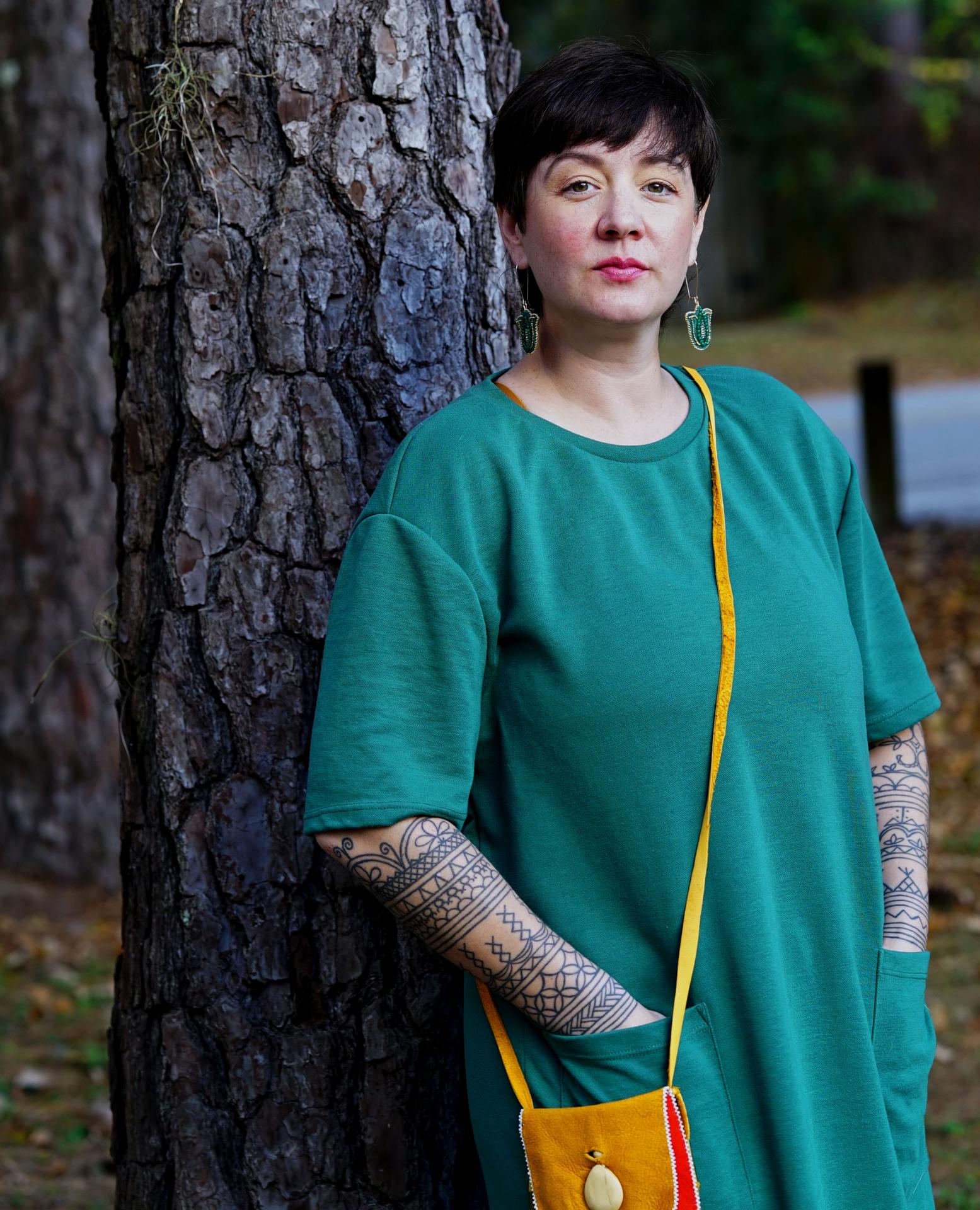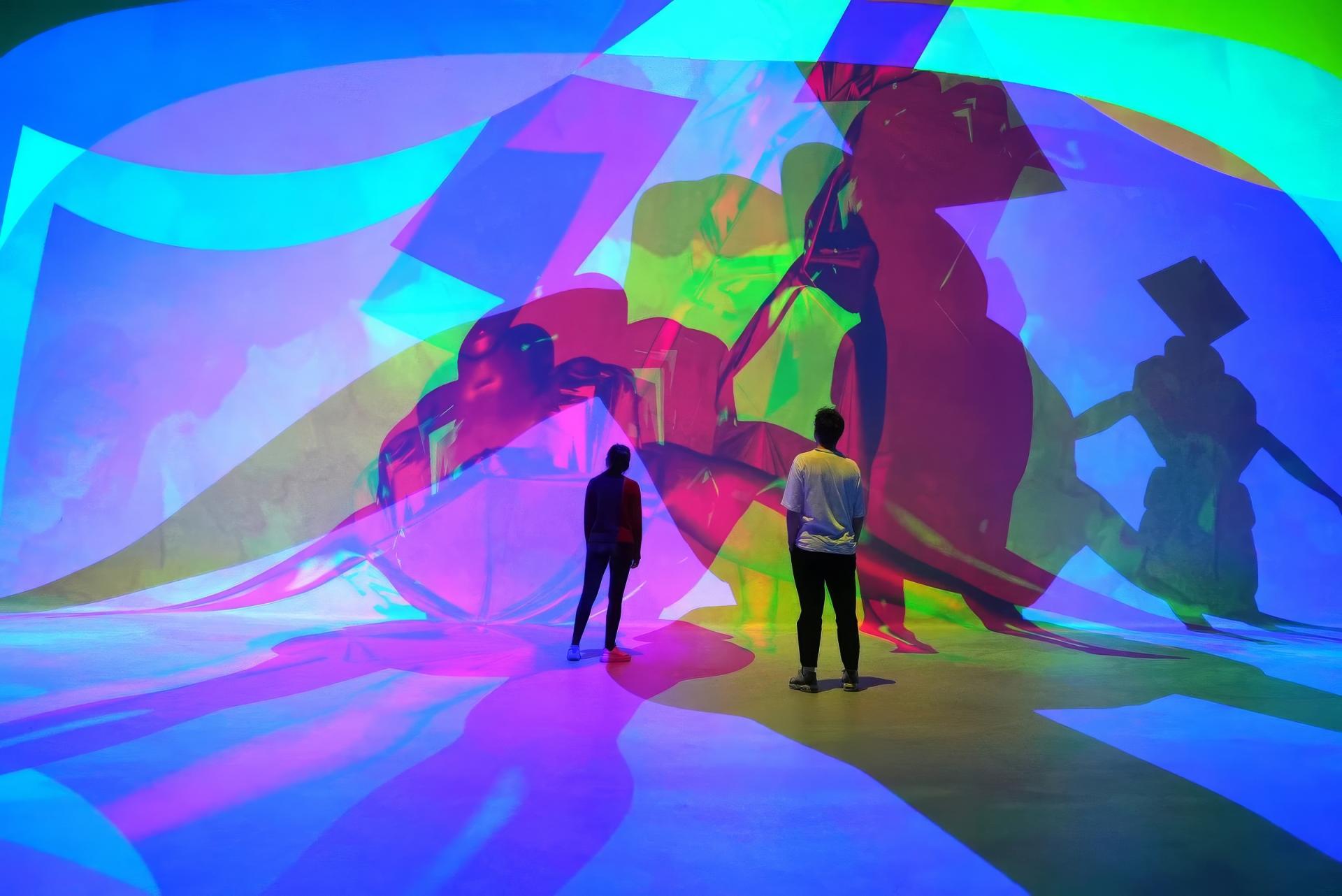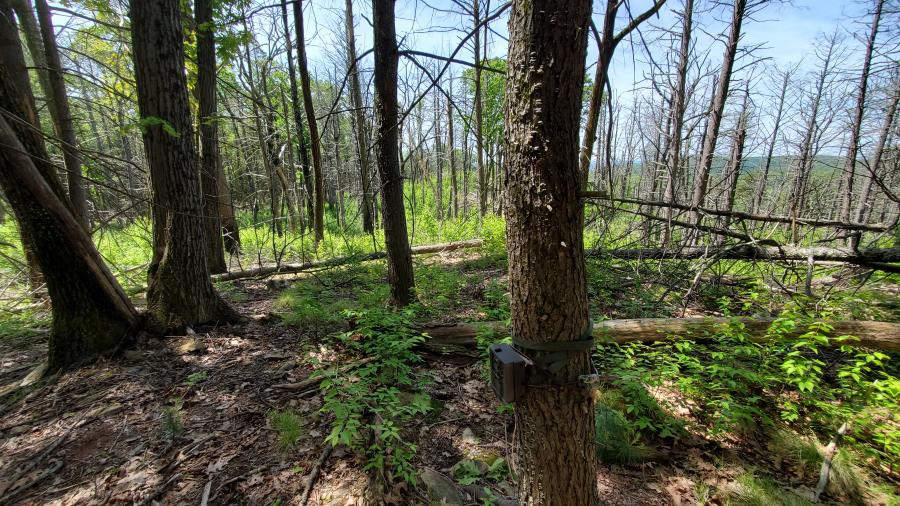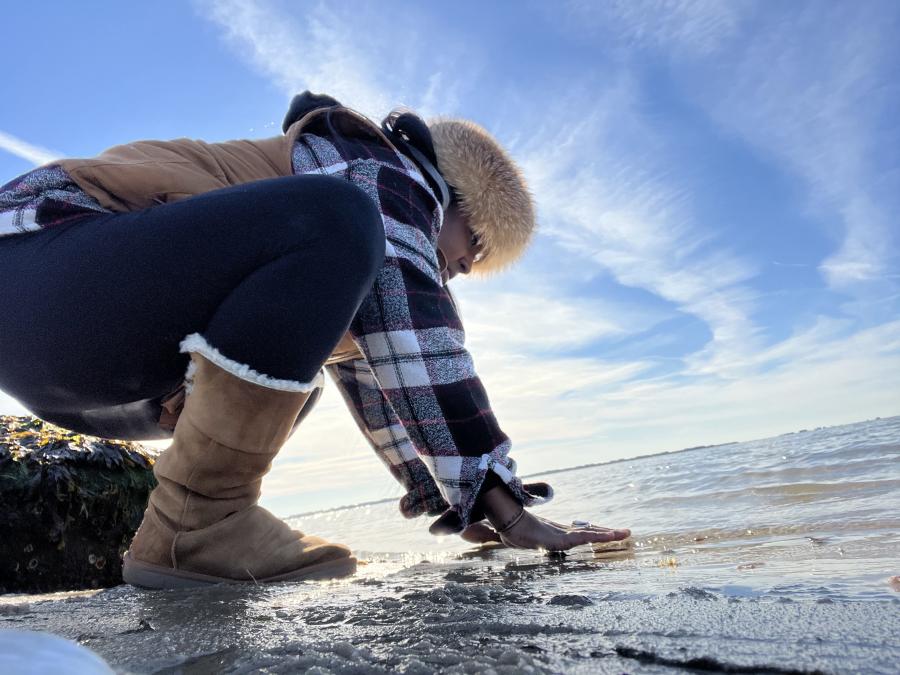
In our time of great technological leaps, Artificial Intelligence can seem at once fearsome and awe-inspiring— no less so for Indigenous Peoples seeking to protect their communities from potential dangers yet also have access to the benefits of such advancements on their own terms. Professor Amelia Winger-Bearskin (Seneca-Cayuga Nation of Oklahoma), Banks Family Chair of AI and the Arts at the University of Florida Digital Worlds Institute, is a foremost expert in the field. She is an artist, educator, and advocate leading the way toward a hopeful future in which Indigenous Peoples are not only included but for which ancestral knowledge, which she refers to as “antecedent technologies,” is a core component. Cristina Verán spoke with Winger-Bearskin following a panel discussion on the subject during the ImagineNative Film & Media Arts Festival in Toronto.

Amelia Winger-Bearskin. Photo courtesy of Amelia Winger-Bearskin.
Cristina Verán: What first sparked your joint interest in technology and the arts?
Amelia Winger-Bearskin: My mom worked for Ganondagan, the New York State historical site for the Haudenosaunee People, and was a founding Board Member of the Smithsonian National Museum of the American Indian. My father worked for Kodak and was part of a team that developed the first digital camera. He taught me a lot about computers. Professionally speaking, I started out as an opera singer and eventually began making theater pieces that combined opera and technology, presenting them in places like the Kennedy Center and Lincoln Center. I was getting invitations from museums as well, and decided to also make art that was interactive to engage new audiences.
How did your parallel journey in academia, which opened spaces for expanding conversations between technology and art even further, develop?
AWB: My first academic job was as a tenure-track professor at Vanderbilt University. I worked with Professor Pratim Sengupta for the Mind Matter Media Lab at the Peabody School of Education focused on Artificial Intelligence in Teaching and Learning—not only how machines learn, but how we, as human beings, learn. As part of the STEAM (Science, Technology, Engineering, the Arts, and Mathematics) initiative for the Obama Administration and the National Science Foundation, we built projects, programs, hardware, and software to help teachers get students ready for the computational future. I wanted to focus more on being a maker and a builder, though, and went back to school to ITP (the Interactive Telecommunications Program) at NYU’s Tisch School of the Arts, where, as a student, I created an EdTech startup.
How does your culture influence your storytelling via tech-driven experiences?
AWB: I’ve been called a “net,” “transmedia,” and “interactive media” artist. Now, I’m known as an XR Artist in AI. These are all just new ways to describe how I use emerging technologies to carry forth the wisdom and stories of our ancestors to make them relevant for the next generation.
In our Seneca-Cayuga tradition, a storyteller is one part politician, one part writer, one part performer, one part actor. You have to be a person that Elders will trust to give their stories to and then also transform them. My mom always encouraged me, saying, “Don’t tell them like I do; find your own way to tell our stories, even using computers or video games.” I approach things from what I think is a really Haudenosaunee way, grounded in an ethical framework for software development I call “wampum codes.”
Wampum is commonly thought of as a form of currency. You’re talking about something more complex here?
AWB: Exactly. It is really more like a consensus mechanism, like a paper on which you’d write the protocols of a contract— a kind of pre-Columbian blockchain, you could say. Western culture is finally “discovering” consensus-based economies, and I love that, but they didn’t invent them. Indigenous Peoples all over the world have worked with these concepts and structures for hundreds, even thousands of years. “Wampum Codes” is also the name of my podcast, by the way; a fun series for which I interview Indigenous guests—comedians, directors, writers, app developers, language experts, etcetera—who use new technologies to positively impact their communities.
You’ve also been making some personal creative forays into the film world. Tell us about some of this work, and what we can look out for.
AWB: Well, I’m not a filmmaker per se, but I love collaborating on films. Working with different filmmakers, I started showing some work at Sundance Film Festival in both its New Frontiers and Indigenous Lab programs. Most recently, I contributed to the film “Fancydance” (starring Lily Gladstone), directed by Erica Tremblay—she’s also Seneca-Cayuga; we’re distant cousins—by creating the [virtual reality] experience that’s included in it.
I also have this collective called Talk To Me About Water, whose members comprise those of Indigenous communities and the Global South, dedicated to telling stories about water crises around the world. One of our members is from Jordan, and so we made a film there last May—I actually acted in it with my sister—which we’ll be sending out to film festivals this year.
You led discussions around how AI is impacting Indigenous professionals in the film industries, at ImagineNative (for which you’re a new Board Member) and at the Sundance Film Festival. What should they be concerned about?
AWB: There are so many ethical questions, which the recent strikes in Hollywood sought to address. The labor of writers, for example, can be taken and put into some AI model to generate a season’s worth of scripts based on their work, yet get them no further compensation. An actor coming to a set for just one day’s work may be scanned— their face, their voice, their body—and not get much money at all, but then the studio could use it all in perpetuity. Actors doing this at 25 could conceivably, at age 35, lose jobs to [AI recreations of] their 25-year-old selves. Meanwhile, an avatar can be made to do whatever a studio wants, unlike an actual Indigenous actor, who, in real life, can reject a script or a character if it’s in some way offensive to them or to their people; they can quit.

Amelia WingerBearskin, MIDNIGHT & TO BODY, part of Realtime “Lilypads: Mediating Exponential Systems” at Nxt Museum, The Netherlands.
What about for visual artists—how should they navigate this emerging technology?
AWB: It’s important to have your values implied and explicit. We’re seeing, in the speculative market now, what happens when you don’t. A lot of artists got burned in the “NFT Winter” a few years ago, for example, they were expendable. Indigenous Peoples have been victims of implied systems, so we hear that doublespeak.
Another concern about emerging technology relates to who can access the tools, education, and networks needed to make use of it in all of the potentially positive ways. Describe the current state of things.
AWB: Access, equity, and inclusion have stalled as priorities for North America toward the Global South and for people here in Indian Country. Groups such as Natives in Tech, Indigenous AI, and many Indigenous academics are working on these issues. A barrier can be something as fundamental as what language is used, and so, as an example of how we can counter such things, a member of my podcast crew [Jon Corbett (Cree)] created a programming language called CREE# (a play on C++) using Cree concepts of streams and loops relating to water.
How does an impetus to decolonize and Indigenize one’s field in terms of values, expectations, and structures figure into your own practice?
AWB: I like to think in terms of what we would call “antecedent technologies.” In AI, having more data helps you to develop the type of model that is best fitted for the type of predictive assistance that you’re excited about. But [the commercial tech sector] is colonizing our future while imagining that we never had [advanced technologies] in the past. Thousands of years of data show us how not only did these concepts already exist for Indigenous Peoples, but what that was like. Why throw away all that data? We actually have a foundation on the exact place where we’re standing today.
Cristina Verán is an international Indigenous Peoples-focused specialist researcher, strategist, curator, and mediamaker, and was a founding member of the United Nations Indigenous Media Network and Indigenous Language Caucus. As Adjunct Faculty at New York University’s Tisch School of the Arts and Clive Davis Institute of Recorded Music, she brings particular focus to Indigenous popular music, culture, and politics, and is a member of the Native Studies Forum. She is originally from Peru.
Top image: From the SKYWORLD/CLOUDWORLD series 2022 by Amelia Winger-Bearskin. Digital image and landscape photography.



